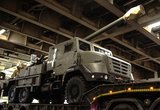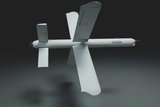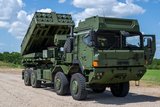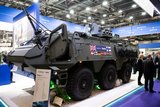Oshkosh lands JLTV order from Israel
Israel has become the latest JLTV customer. (Photo: Oshkosh)
The Israeli Ministry of Defence has ordered two batches of Oshkosh Defense Joint Light Tactical Vehicles (JLTVs), one batch via Foreign Military Sale and the other batch via Direct Commercial Sale, totalling 75 vehicles.
The order has made makes Israel the 10th JLTV customer for Oshkosh which had been prime contractor supplying to US forces until a re-competition handed those orders to AM General.
In November, Oshkosh received a US$208 million order for JLTVs, trailers and associated packaged and installed kits for the US Army, USMC and USAF, an order the company said would take its production line out beyond mid-2025 and the newest order will push production out even further.
The army contract was followed up by $160 million order for JLTVs for Mongolia, Romania, North Macedonia, Slovenia and Slovakia.
The value of the Israeli order was not disclosed but Shephard Defence Insight, based upon the average unit cost of a JLTV procured by the US Army in FY2022, listed the cost of vehicle at $277,000 meaning the value of the contract could be more than $21 million depending on ancillary equipment.
Equipment such as weapons, remote weapon station, armour and communications could be supplied locally, particularly as Plasan has been contracted to supply armour for AM General vehicles.
More from Land Warfare
-
![Hungary set to begin using Hero 400 loitering munitions]()
Hungary set to begin using Hero 400 loitering munitions
Developed by Israel's Uvision and with systems being sold in the thousands to multiple European NATO countries and the US, the Hero family of loitering systems is also in production in the US and Italy, the latter through Rheinmetall.
-
![Lockheed Martin to look further afield for GMARS rocket system opportunities]()
Lockheed Martin to look further afield for GMARS rocket system opportunities
The HX truck is already in use in many NATO and allied countries around the world as a logistics vehicle and carrier for high-value systems, including missile firing weapons, so its use for the Global Mobile Artillery Rocket System makes logistical sense.
-
Medium knocked out of British Army LMP, with CAVS as heavyweight champion
As the British Army seeks to modernise and consolidate its diverse vehicle fleet, yet another change in direction is underway.























